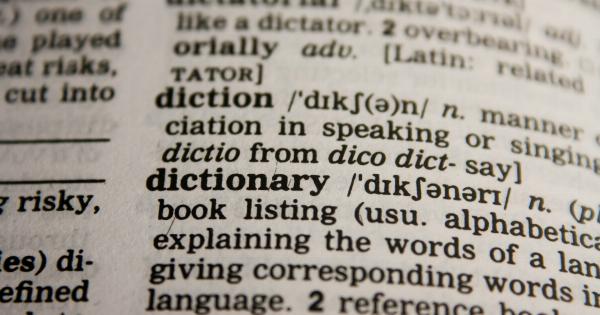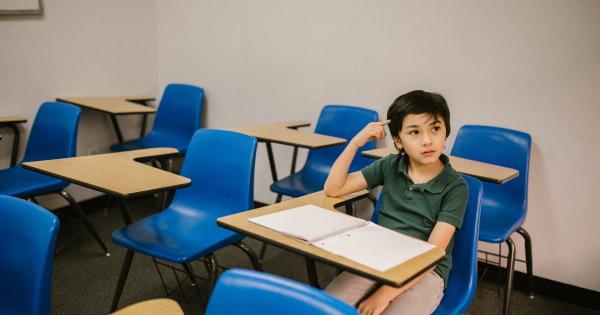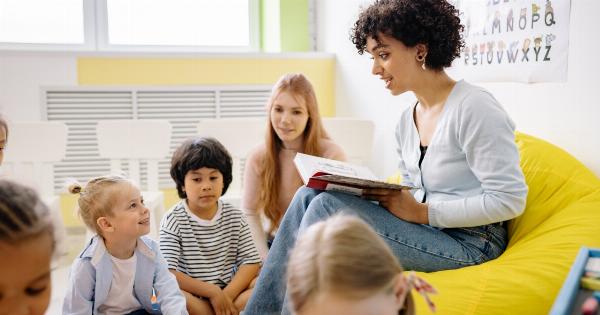Learning a foreign language can be a challenging task, especially for those with special needs, such as individuals with learning disabilities or communication disorders.
However, one powerful tool that can significantly enhance the language learning experience for special English learners is the use of pictures. Pictures have the ability to transcend language barriers and provide a visual representation of concepts, making it easier for individuals with special needs to grasp and retain information.
In this article, we will explore the various ways in which pictures can be used to support and enhance the English learning journey for special learners.
1. Visual Stimulation and Engagement
Pictures have a strong visual impact that captures attention and engages learners in the language learning process.
For special English learners who may struggle with attention deficits or difficulty processing auditory information, visual stimuli can provide an effective means of enhancing engagement and focus. Through the use of pictures, learners can connect words to visual representations, making the learning experience more interactive and stimulating.
2. Vocabulary Acquisition
One of the fundamental building blocks of language learning is vocabulary acquisition. For special English learners, pictures can play a crucial role in facilitating the understanding and retention of new words.
By associating words with corresponding images, learners are better able to grasp the meaning and context of the words, leading to improved vocabulary acquisition.
3. Conceptual Understanding
Pictures can also aid in the development of conceptual understanding, especially for special English learners who struggle with abstract or complex ideas.
Visual representations of concepts or ideas make them more concrete and accessible, enabling learners to better comprehend and internalize the information being presented. Whether it’s understanding the concept of time, spatial relationships, or emotions, pictures provide a tangible reference point for learners to relate to.
4. Language Comprehension and Expression
For special English learners who may struggle with language comprehension or expression, pictures can serve as valuable tools for bridging the communication gap.
Visual cues help learners to better understand the meaning behind words and sentences, making it easier for them to comprehend and interpret the language. Similarly, pictures can assist learners in expressing their thoughts and ideas, even if they have limited verbal communication abilities.
5. Storytelling and Narrative Skills
Pictures can be a catalyst for developing storytelling and narrative skills in special English learners. By using visuals as prompts, learners can create narratives, explain events, and construct their own stories.
This process not only enhances language skills but also fosters creativity, imagination, and critical thinking abilities.
6. Cultural Awareness
Language learning is not just about acquiring vocabulary and grammar rules; it also involves understanding and appreciating different cultures and their customs.
Pictures can provide glimpses into various cultures, allowing special English learners to explore and learn about different traditions, landmarks, and people from around the world. This exposure to diverse cultures helps broaden learners’ horizons and develop intercultural competence.
7. Memory and Retention
Pictures have proven to be effective memory aids, particularly for individuals with special needs who may struggle with memory retention.
The visual nature of pictures helps learners to form stronger memory associations, making it easier to recall information at a later stage. By incorporating pictures into language learning activities, educators can enhance the long-term retention of vocabulary, grammar rules, and other language components.
8. Adaptability and Personalization
Pictures offer a high level of adaptability and personalization, making them an ideal resource for special English learners who require individualized approaches to learning.
Educators can tailor the use of pictures to cater to the unique needs and preferences of each learner, creating a personalized learning experience.
Whether it’s selecting pictures that align with a learner’s interests, adapting visuals to accommodate specific learning styles, or using visuals to depict familiar scenarios, the versatility of pictures makes them an invaluable tool in special education settings.
9. Multi-sensory Learning
For special English learners, engaging multiple senses can significantly enhance the learning experience.
Pictures can be combined with other sensory stimuli, such as audio recordings, tactile materials, or gestures, to create a multi-sensory learning environment. This multi-sensory approach promotes active engagement, strengthens neural connections, and facilitates language learning for individuals with special needs.
10. Confidence Building
Lastly, pictures can contribute to building the confidence and self-esteem of special English learners. A visual approach to language learning eliminates the fear of making mistakes or not fully understanding verbal instructions.
Pictures provide a sense of security and empowerment, allowing learners to actively participate and express themselves without the fear of judgment. This boost in confidence can have a profound impact on the overall language learning journey.



























